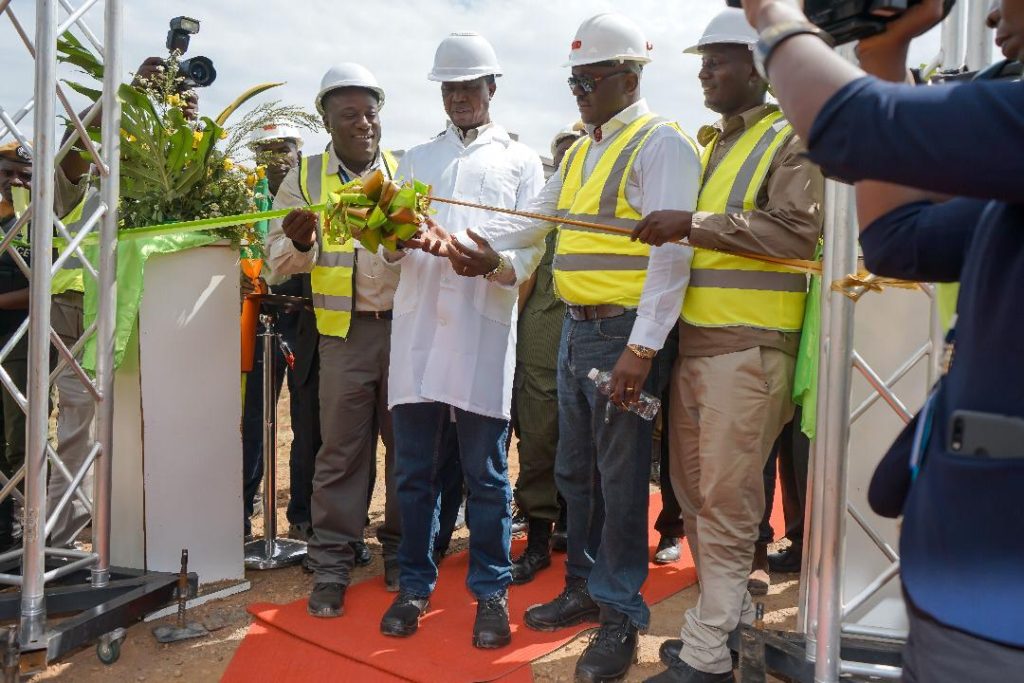Matthew Banda didn’t exactly choose a career in mining. You could say, perhaps, that it chose him. His serendipitous entrance into the industry began with a roommate whose textbooks on mining engineering intrigued the young University of Zambia student, and the journey has been anything but dull since then.
Mining For Zambia caught up with Mabiza Resources’ General Manager, and found out how working for the Government later led to him being headhunted.
How did you get into the mining industry?
Initially, my interest at UNZA [University of Zambia], was in doing an engineering subject, in fact. In my first year, I was studying the sciences and my roommate was in his second year at the School of Mines, studying mining engineering. I became interested in perusing through his books… It was then that I thought “Yes! This is the specific engineering discipline that I should focus on.”
In my second year at UNZA, thus, I joined the School of Mines at UNZA. The rest is history!
It sounds like having this particular roommate was quite fateful.
Yes – well, who knows? I could have pursued a completely different career path and done something else!
He laughs loudly.
Also, neither of us had ever lived on the Copperbelt. I think my roommate opted for mining later because of the versatility of the subject.
Tell us more about your studies at UNZA.
There are several engineering aspects that you tackle before you graduate as a mining engineer. The School of Mines has programs including geology, metallurgy, and mining engineering itself. For me, mining appears to be the most versatile of the engineering subjects. The curriculum requires one to study a bit of geology, a little bit of mineral processing, surveying, ventilation, fluid mechanics, along with the main mining aspects.
What was your first job in the industry?
I worked at Luanshya Mine at the time of the transition [from all mines being state-owned] to privatisation. Luanshya was formerly owned by Zambia Consolidated Copper Mines [ZCCM], and it was one of the first assets to be privatised. I was there for four years. I did my basic graduate training. It was basically hard rock mining, so you deal with different mining methods. Then, the mine went on care and maintenance. Being one of the first to be privatised, it was a troubled asset. It was the first time I experienced care and maintenance, and it was not pleasant.
How so?
It’s unpleasant from the perspective that you’re making a contribution, you’re doing your full job – you may have to handle maintenance of equipment, for example, and everything you’re doing is fully-fledged – but your remuneration is cut. That was my experience at Luanshya.
Then what?
Instead of joining one of the flourishing mines – at the time those were Mopani, KCM and the mines in the northwest – I decided to join the Government. In 2002, I joined the Ministry of Mines in Lusaka, and I spent a bit more than four years there. Then, towards the end of 2006, Albidon [then an Australia-based mineral exploration company] commenced the development of Munali Nickel Mine.
Munali was a promising new project at the time, along with Lumwana in the northwest. I was actually headhunted for the job at Munali.
He chuckles modestly.
So, I joined Albidon. It was a fresh, brand new greenfield development. I was involved in the entire process of the setting up and construction of the on-site infrastructure, the process plant, and the underground mine.
You’ve been working at Munali since the very beginning?
Yes, I’ve been here for 12 years. There was nothing when I arrived – it was basically just maize fields!
What was your position when you started in 2007?
I came in as a senior engineer. The construction aspects were treated as projects. Then, when we began transitioning into operations, I was elevated to Superintendent for Technical Services. But we only operated for about six months. Then, due to the global financial crunch, we went down…
“I’ve been here for 12 years. There was nothing when I arrived – it was basically just maize fields!”
How long were you on care and maintenance?
For about nine months. Then, in 2010, we restarted operations.
But Albidon didn’t manage to turn things around, so one of their investors – Chinese-owned Jinchuan – bailed the company out, correct?
Yes, the asset was solely owned by Albidon, and that’s when Jinchuan offered to bring in more investment. Jinchuan was the off-taker [the buyer] for the product at the time, and they had already invested around $25 million in the initial development of the mine. They were the biggest among the minority shareholders. When the banks foreclosed on the asset, Jinchuan was going to be impacted greatly, so they had to come in and bail out the organisation.
How did things change once Jinchuan had more control over the company?
I was still employed by Albidon, as Mine Manager at the time. Jinchuan appointed a General Manager who was in charge of the site, and I reported to that General Manager. A few other people came from China to help run the operation.
It sounds like there were a lot of big changes during a time when nickel prices were down.
Yes, and prices were continuing to go down. We were an Australian-listed company, owned by the Chinese, with Chinese management on site. We had an office in Australia and, on the mining side, we had an Australian mining contractor. So, there was basically a mix of management styles on site: the Eastern, the Western, the traditional.
There were a few factors that caused the mine to go on care and maintenance in 2011: Nickel prices, inefficient geological models, and less-than-ideal mining methods. Would you say that challenges with management were a factor too?
Yes. It was sometimes difficult just to get the operation running because of the different dimensions within the management structure. We had reporting lines to Australia where Head Office was, but the Chinese employees on site often felt more obliged to report to China than to Head Office.
“We were an Australian-listed company, owned by the Chinese, with Chinese management on site. So, there was basically a mix of management styles on site: the Eastern, the Western, the traditional.”
How long was Munali operational under that management structure?
That operation only ran from 2010 until 2011 – a total of about 23 months.
What happened then?
We went on care and maintenance again. During the period of care and maintenance, Jinchuan wanted to restructure the organisation. By 2013, they had taken it off the Australian stock exchange and bought Albidon’s 49 percent share. So it became 100% owned by Jinchuan.
Despite this, the mine remained dormant for seven years. On 16 April 2019, Mabiza Resources Limited and its London-based parent company, Consolidated Nickel Mines, re-launched Munali Nickel Mine’s operations, following a $50 million refurbishment of the asset.
Banda became General Manager of Mabiza Resources in December 2014, which is when UK-based Consolidated Nickel Mines (CNM) acquired the rights from Jinchuan to operate the mine.
What are some of the biggest challenges you’ve faced as General Manager?
Well, initially – because we were coming out of care and maintenance – what was keeping me awake at night was creating an effective team on site to bring the mine back to life. I had to do a really big recruitment exercise. We moved from 60 employees to over 300 in about six months!
He laughs.
It sounds like you had confidence in the refurbishment of the asset. But creating a good team was key, too.
Yes, a good team makes a big difference, and that was the missing piece. I think that, from the point of view of this being a new team – and the biggest I’ve ever had to deal with – it’s come together fairly well.
Is there one particular achievement that that you’re most proud of since Munali came on line again?
It’s been a feat to get things working again. On the mining side, I think we are settled. Just last week [in April 2019], we managed to deliver 12,000 tonnes of ore to the ROM Pad [where the ore is stored ahead of the Run-of-Mine Stockpiles, before being crushed.] At optimum production, we should be doing 15,000 tonnes. So, we’re almost there. We need to consistently deliver 15,000 tonnes a week to give us the necessary 60,000 for the process plant per month. We hope to achieve that by August 2019.

The media has been excitedly reporting on Munali’s potential for expansion. We understand that the asset may look at producing nickel sulphate for batteries?
What’s most likely is investment in a solvent extraction electrowinning method, involving putting up a leach circuit that will facilitate value addition through electrowinning.
[Electrowinning involves extracting metals from their ores by putting them into a solution, and then plating that onto another surface.]
The output of that is nickel plates. Buying certain equipment for these solvent extraction methods would also allow for the production of nickel sulphate. It’s a matter of what gives you a better price. At the moment, the market for nickel sulphate looks good because nickel sulphate is what goes into batteries.
Nickel has long been used in batteries. Vehicles like the Toyota Prius popularised nickel metal hydride (NiMH) rechargeable batteries in the 1990s. The lithium-ion batteries that power Electric Vehicles today require around as many as 63 kilograms of nickel for one car battery, with Tesla using a relatively low-cobalt combination of nickel, cobalt and aluminium.
Will the mine’s lifespan extend beyond seven years if you get the capital to do more exploration?
Yes. The immediate goal is to achieve a lifespan of ten to fifteen years. We have already identified potential areas, which we just need to test. We have indicators.
As a young mine, like a newly-born infant, you could say that we’ve been in “intensive care”. We really need a little bit of special care now – from all players, but especially the Government. If we can reach maturity, then we could also reach old age at some point. But unless we do further exploration work, we won’t.
Munali was recognised by the Government as “the leading mining company for Corporate Social Responsibility in Zambia”. How has social investment remained central to the company’s mandate, despite the challenges that went with not being operational?
The public and certain government departments are not always aware that a mine on care and maintenance still keeps social initiatives in the community alive. When CNM came on board in 2015, they agreed to take over everything that was already happening, including social investment. Our work building a school was happening as early as 2015. There was a lot of other work that was done in terms of social investment, including our Resettlement Action Plan [for which $7.5 million was spent on building new homes for households impacted by the mine’s operations.]
We take all that into cognisance as the investment made by CNM.
***
The fruits of CNM’s investment are evident in every corner of Munali’s site, from a school and a clinic, to a peanut processing plant and the country’s first Dense Media Separator. Judging from the variety of the projects that the Mabiza Resources team is working on, Banda’s future in the mining industry promises to be at least as eventful as his past.
See also: Meet the metallurgist who never stopped believing in Munali Nickel Mine























